I apologize up front for the contrasty results of my point-and-shoot on this brilliantly sunny morning, but it will be too dark for photos within the hour under these temperamental skies. (This is as far as the working collaboration with my camera goes in difficult light conditions. I was very gratified to learn that Patti Smith once confessed she had no idea what she was doing with a camera either.). But I think the general sense of how the garden coped with the ice storm is conveyed, and that’s good enough for my own recordkeeping. To wit, in the photo below, everything in this stock tank seems fine: Arctostaphylos ‘Sunset’ (still holding onto and opening flowers), restio Chondropetalum tectorum, and golden blur in the background Cassinia leptophylla. Shrub in the ground to the right is Hebe ‘Western Hills.’ Clockwise from the hebe is Eryngium agavifolium, with bottom center an asphodel bought local, mostly likely A. lutea. I thought the freeze would cull out the zillions of Omphalodes linifolia seedlings, but no, they all still appear to be there, needing thinning by me.
I haven’t planted much that can’t take a zone 8 winter unprotected, but saturated soil combined with the unusual ice conditions had me worried not so much about plant losses, but ugliness issues. And on that score, it could’ve been worse. The only outright death was a Lavandula ‘Goodwin Creek Gray,’ nothing to cry about.
My small-sized Yucca rostrata are fine, even the distant one under the planter which was moved in the fall. At the planter’s base is an Arctostaphylos ‘Pajaro’ planted in 2023 retaining good color and no die-off. (And in the bowl of the planter, surprisingly a small Echeveria agavoides survived! Reputedly hardy to 14F, and we did not achieve that low here.)
The most detailed protections were made for this beschorneria and the strappy aristea. The prospect of waiting for them to outgrow severely blemished leaves was incentive enough to build a cardboard tent, which worked well. The leaves are mostly pristine.
The hebe in the foreground is ‘New Zealand Gold.’ Astelia chathamica looks none the worse for wear in its pipe.
Phlomis monocephala grows up against the concrete patio, slightly under the overhang, and seems to have come through the ice fine, as have all the phlomis. Silvery shrub is Cassinia x ozothamnus.
Also protected in this area was the sideritis, with an overturned bucket. I lost all top growth in the April 2023 snowstorm and was hoping to hang on to this growth, if possible. Looks good so far.
Just forward of the sideritis, hardiness of Calluna ‘Skyline Barcelona’ was not really in doubt, but it still surprises me that it looks this fresh after the ice ordeal.
Looking east between stock tanks and the garden. Rhodocoma capensis’ icy performance was interesting to observe but thankfully not damaging. (The third stock tank unseen behind the restio holds mostly winter dormant plants.)
The garden-side planting in front of the middle stock tank (with the beschorneria). No losses in the ground here. Rosette is Kniphofia hirsuta, to zone 6.
After the ice storm, Euphorbia stygiana is probably as shabby as I’ve seen it in two winters, but alive. Many of the branches were bent, but I’ve left them to die in place to protect the new growth at the base. Confoundedly, they aren’t dying at all but greening up. 70F last Monday and the bent stems still did not wilt but remained firm. I checked this same euphorbia at the Wonder Garden in Manzanita a couple days ago and it’s in much worse shape, probably from stronger winds, even though it’s technically a warmer spot.
Hebe parviflora angustifolia is sited just in front of the shop stool, and the east winds knocked it back hard. A lush, willowy evergreen, 3X2′ is now a thready mix of green and brown. Apart from losing a lot of leaves, no real damage is visible.
Anisodontea, the Two-Face Shrub. The east side was blackened, and for several days the patio was strewn with fallen black leaves resembling slimy spinach. New growth has already started. The west side of the shrub showed little damage and has started flowering again.

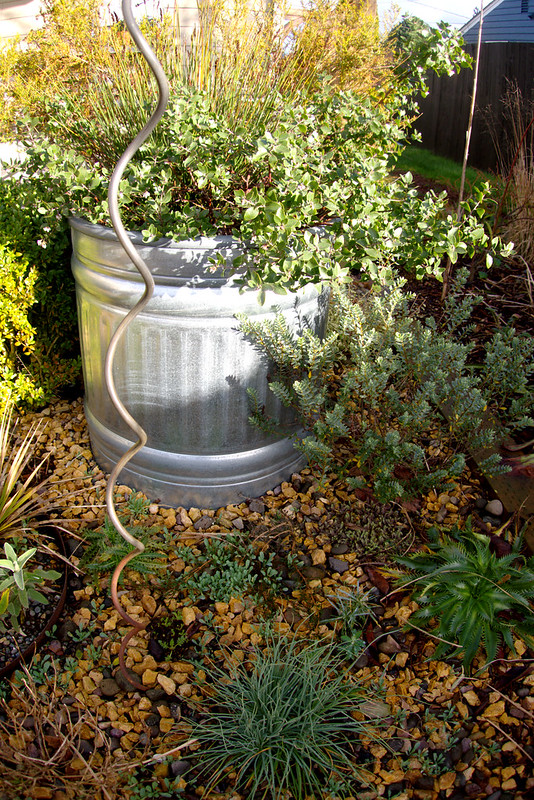

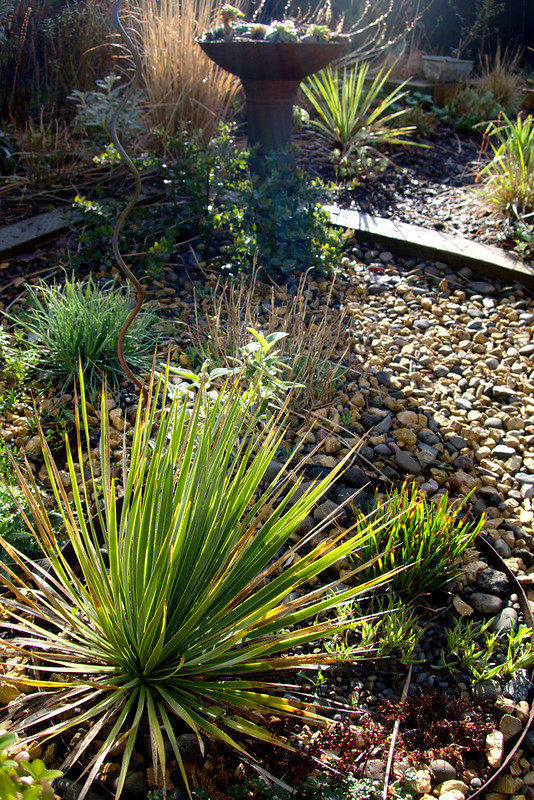


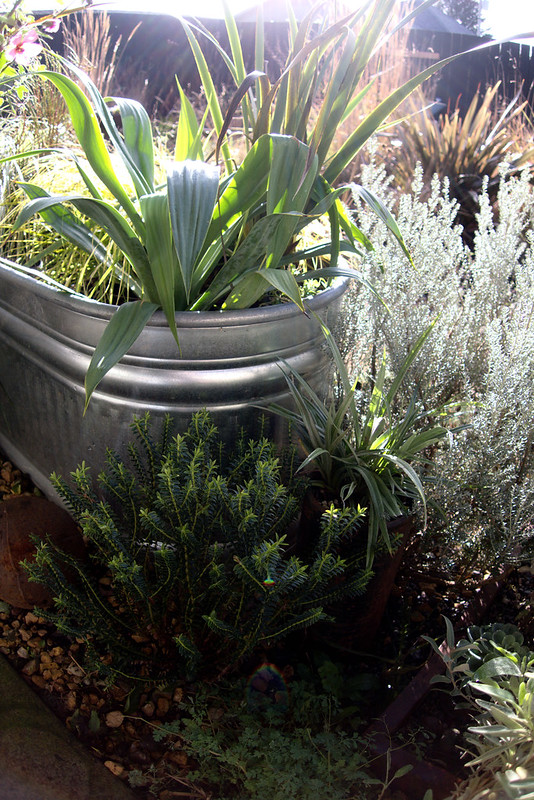
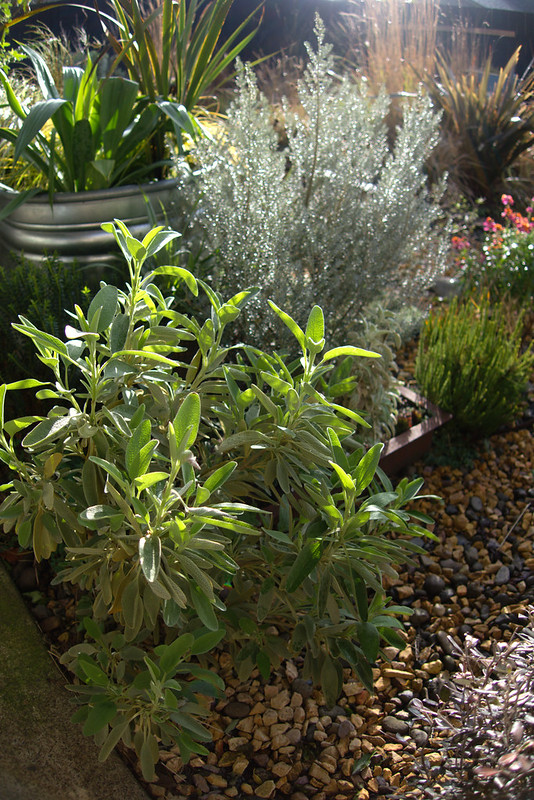

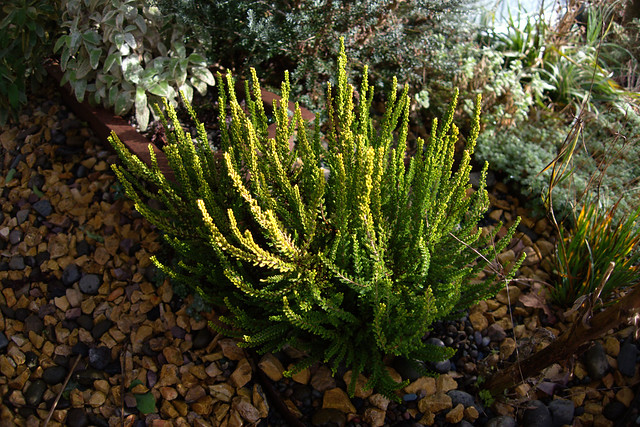
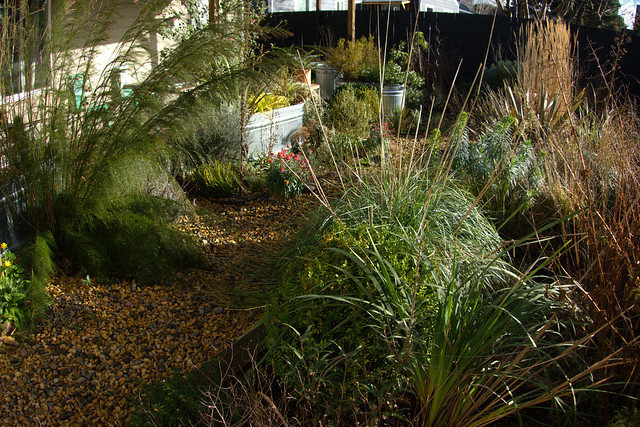



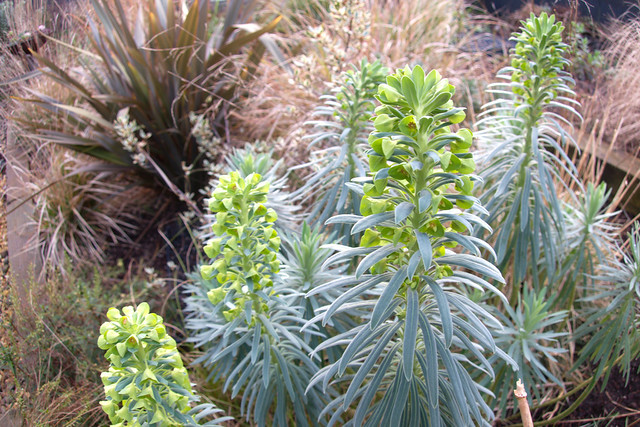
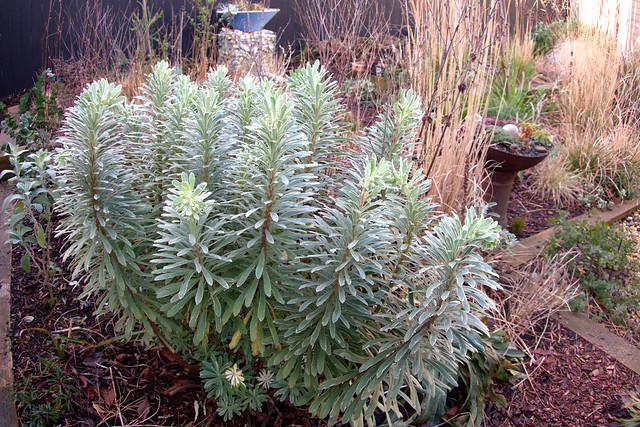



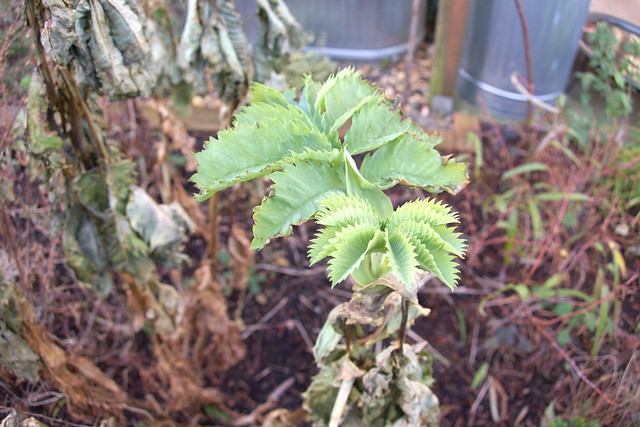


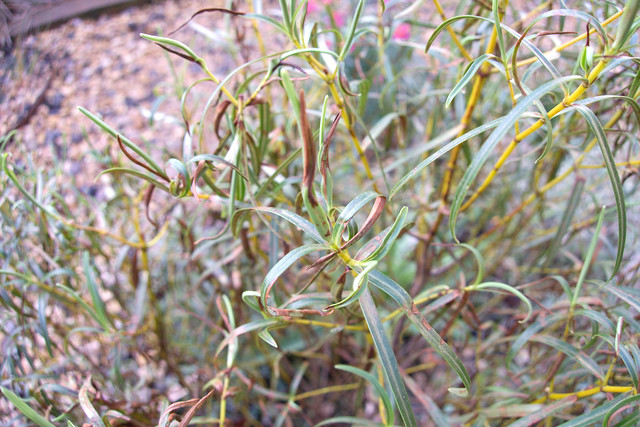
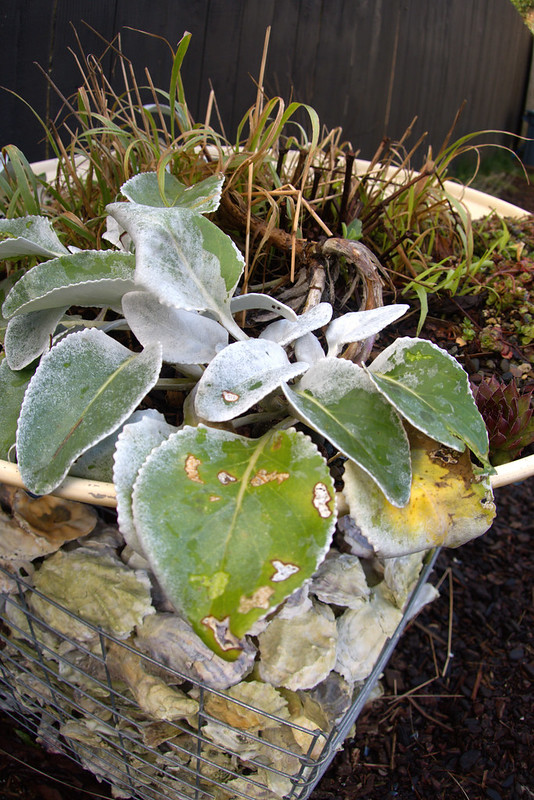
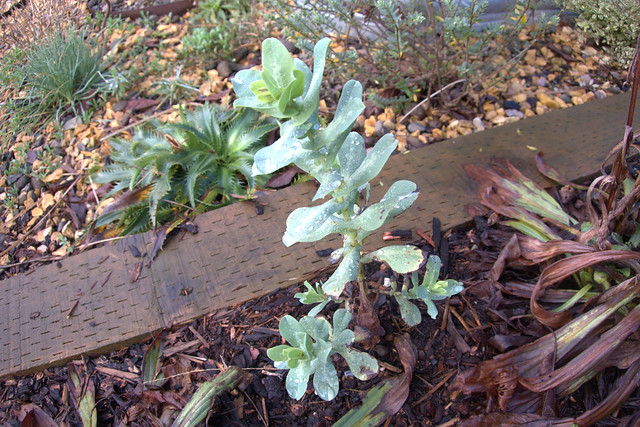

You would not know what that garden has been through recently. Really took it all in stride! It looks lovely even at this time of year.
I am so glad that so much is looking good in your garden! I was working on a similar blog post last night (up tomorrow) and was struggling to explain that the majority of the plants showing “ugliness issues” are not in fact anything that should need to be protected in my Zone 9a (hahahahaha, not really thanks USDA) garden. My Euphorbia stygiana is toast and my Metapanax delavayi is completely brown. On the bright side my Sinopanax formosanus looks great!
@Tracy, it’s incredible to watch this resilience. Having only had experience with heat and drought, this has been fascinating and really keeps one on their toes!
@Loree, not your metapanax! Incredible what the gorge wind and just a few ticks under freezing for a few days more can do. Here’s hoping for more signs of life in spring. And hooray for your sinopanax!
For such a severe weather event the plants look remarkably good. Only a few casualties. I always amazes me how much tougher plants are then we think they are. The fact that many are still flowering and pushing new growth just goes to show how little they were set back. Hopefully that will be it for the winter.
@Elaine, who knows what weather swerves are ahead, but there are ground hog rumors of an early spring 😉
Your garden definitely looks relatively unscathed, must be the moderating influence of the Pacific. Beautiful. We got hit moderately hard, though we fared better than Portland. Every single one of our Cerinthe were killed and look like stewed spinach, but I think I have enough of a seedbank built up in the soil that we should still get a few seedlings come spring. Damage is still slowly showing up with each new week. Won’t know more until those spring temps hit, the buds pop, and the new growth begins. I’ve got a lot that still looks good though, and lots more that looks ugly, but will survive.
The last photo caption of your post (“bedraggled but still blooming. I saw a bee on the flowers today.”) reads like the line of a poem or the lyric of a song, Denise. I’m glad to see that your garden came through its ice challenge in good shape overall. My own ‘Winter Orchid’ Erysimum has yet to show any inclination to bloom but then I’m grateful it’s still alive.
@Jerry, true, we got off relatively easy at the coast, but there’s a lot of winter left. I’m anxious to see what spring reveals too — some losses no doubt, but I think an eremurus just nosed up today!
@Kris, erysimum love it up here, cold and wet, heavy soil. I’m not too worried about the Oregon garden, however the LB one handling all that rain and wind, yikes…